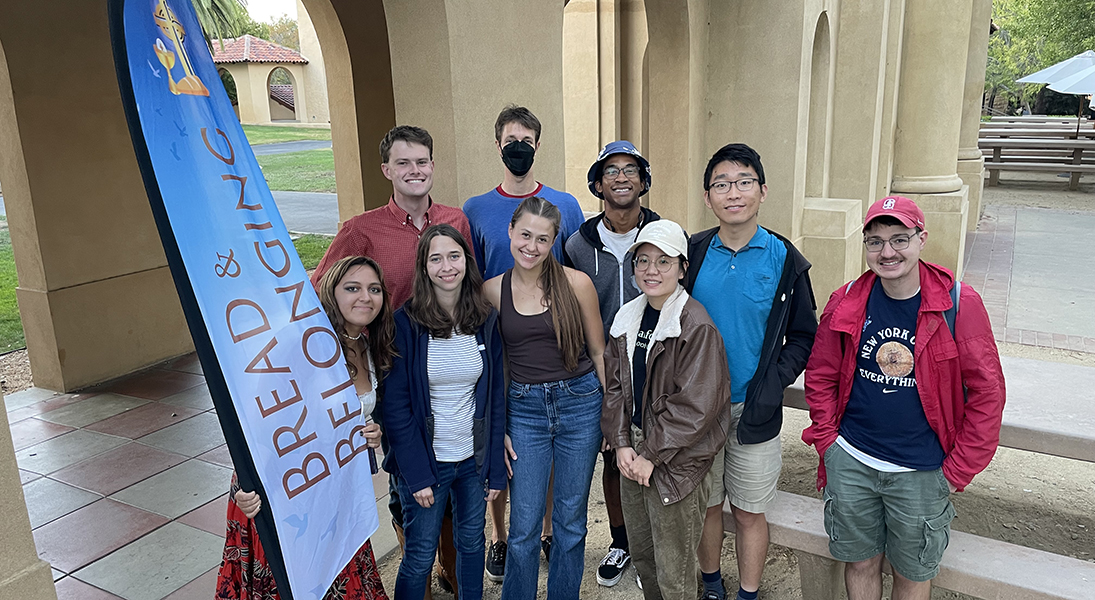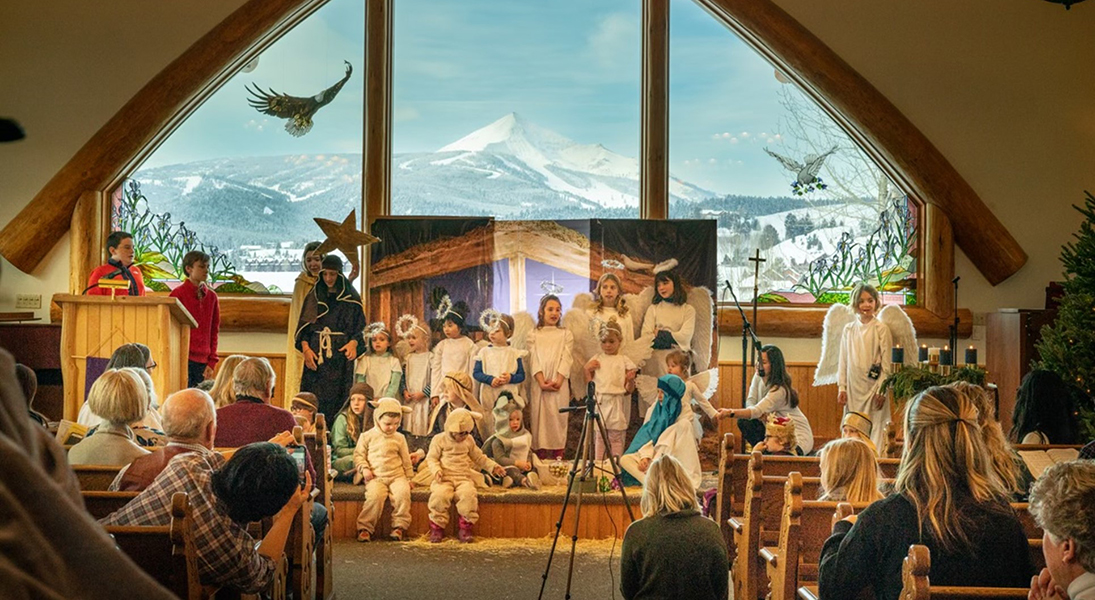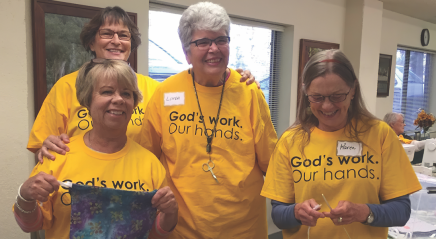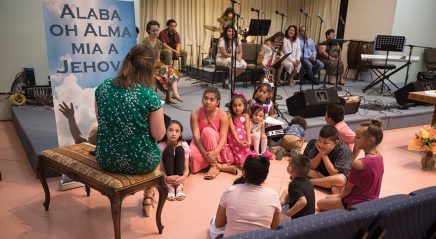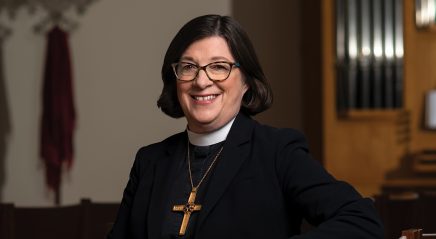More than two decades after the ELCA and The Episcopal Church became full communion partners, congregations from both denominations are joining forces in arrangements that many see as the way of the future.
In North Baltimore, the high cost of heating the venerable Lutheran Church of the Holy Comforter led members to find and partner with their Episcopal neighbors, the Church of the Nativity, Cedarcroft. Seven years later, members of both churches say that their combined congregation is stronger and more effective .
In Big Sky, Mont., Lutheran and Episcopalian members of All Saints in Big Sky share a worship space with two other faith traditions. Neither the Lutheran nor the Episcopalian church owns the space, and according to the “Lutherpalian” worshipers, not needing to maintain a building allows them to focus on outreach to a nearby resort area teeming with newcomers and seasonal residents and ripe for sharing the gospel and community.
In a quiet corner of Winston-Salem, N.C., an aging and shrinking congregation turned a new page in 2016 by launching a bilingual outreach to the neighborhood’s growing Latino community. The new effort, assisted by bishops from both ELCA and Episcopal offices, is called Comunidad Amada de Cristo (Christ’s Beloved Community) and now fills the modest sanctuary with children, singing and a vibrant social ministry.
And on 33 college campuses across the country, Lutheran and Episcopalian students explore together what it means to be God’s children, which is more important to many of them than what it means to be Lutheran or Episcopalian. College students are increasingly likely to find a combined Lutheran-Episcopalian presence on campus. The ordained leader may come from either denomination and is often supported by a nearby congregation.
These joint ventures reflect what pollsters and social scientists are seeing from a wider, longer view: Americans care less and less about religious affiliation, and those who do are attending Sunday services less and less.
Richard Mammana, associate for ecumenical and interreligious relations in The Episcopal Church, argued that Lutherans and Episcopalians find themselves in ministry together more for efficiency than necessity. Struggling to keep a church building open when there’s no one inside, he said, “just doesn’t make sense.”
Being the body of Christ
Since 2001, when the ELCA and The Episcopal Church entered into full communion after 30 years of dialogue, they opened the door to sharing clergy across church bodies, and more congregations and ministries are moving toward that option.
Stewart Lucas, the Episcopal priest who welcomed Lutherans to the building now called the Church of the Nativity and Holy Comforter, said that Lutheran-Episcopalian partnerships often come down to simple math: “too many buildings and not enough clergy.” Besides, said Lucas, “We truly are better when we collaborate together.”
These combined efforts are not mergers; the respective churches’ ministries are still connected to their own ecclesial structure. But the churches’ cooperation frees up resources so that both partners can focus more effectively on congregational mission.
“You do not need to say to All Saints people ‘The church is not the building,’ because they get it,” said Valerie Webster, associate priest of All Saints in Big Sky. “They get being the body of Christ.”
“We truly are better when we collaborate together.”
At All Saints, Lutherans, Episcopalians and clergy of other faith traditions take their turns worshiping in a shared chapel owned by a nonprofit third party.
All Saints has a closet, said Webster, where it stores its crucifix and paraments. These are all laid out before worship on Sunday morning, then packed up to make way for the praise band and Roman Catholic worship of a nondenominational church that afternoon. She compares the weekly rotation to a dance.
Forty miles from Bozeman, Mont., and 60 miles from Yellowstone National Park, All Saints provides a faith home for the global visitors from many denominations who jet in and out for the ski slopes, mountain biking and vacation homes. The church’s setting may be unusual, but Webster believes that theirs is a model others ought to consider.
“One of the reasons we are so successful is their eyes are on Christ,” she said of her fellow worshipers. “They have been shaped by their traditions and they love their traditions. But it’s not about the Lutheran Church or the Episcopal Church.”
“The church landscape is changing fast and furious,” said Miriam Schmidt, the ELCA pastor of All Saints. Rarely does she find anyone under 50 with deep denominational ties.
“They know what matters”
The trend away from denominational loyalty is even more pronounced on college campuses. Nationally, more than a third of Generation Z identify as religiously unaffiliated. Those who meet at campus ministries for a weekly meal and creative worship do so to find acceptance, voice their questions and grow, said Lutheran and Episcopal leaders alike.
“They know what matters about being Christians together,” said Travis Stevens, advisor to Episcopal Lutheran Campus Ministry at Stanford University in Palo Alto, Calif. “They know we have much more in common than not. Our differences just don’t matter.”
Like many mixed congregations, campus pastors find little debate or concern among students over the elements served, the prayers spoken or the hymnal used. Even the words of the Lord’s Prayer are known to bump against each other when recited by the diverse Christians in campus ministries: “Forgive us our trespasses,” say some. “Forgive us our debts,” say others. “Perdona nuestras ofensas,” say still others.
Students always reach the end of the prayer at the same time, say campus pastors, no matter what translation is used, or from what tradition. They all say “Amen” together.



